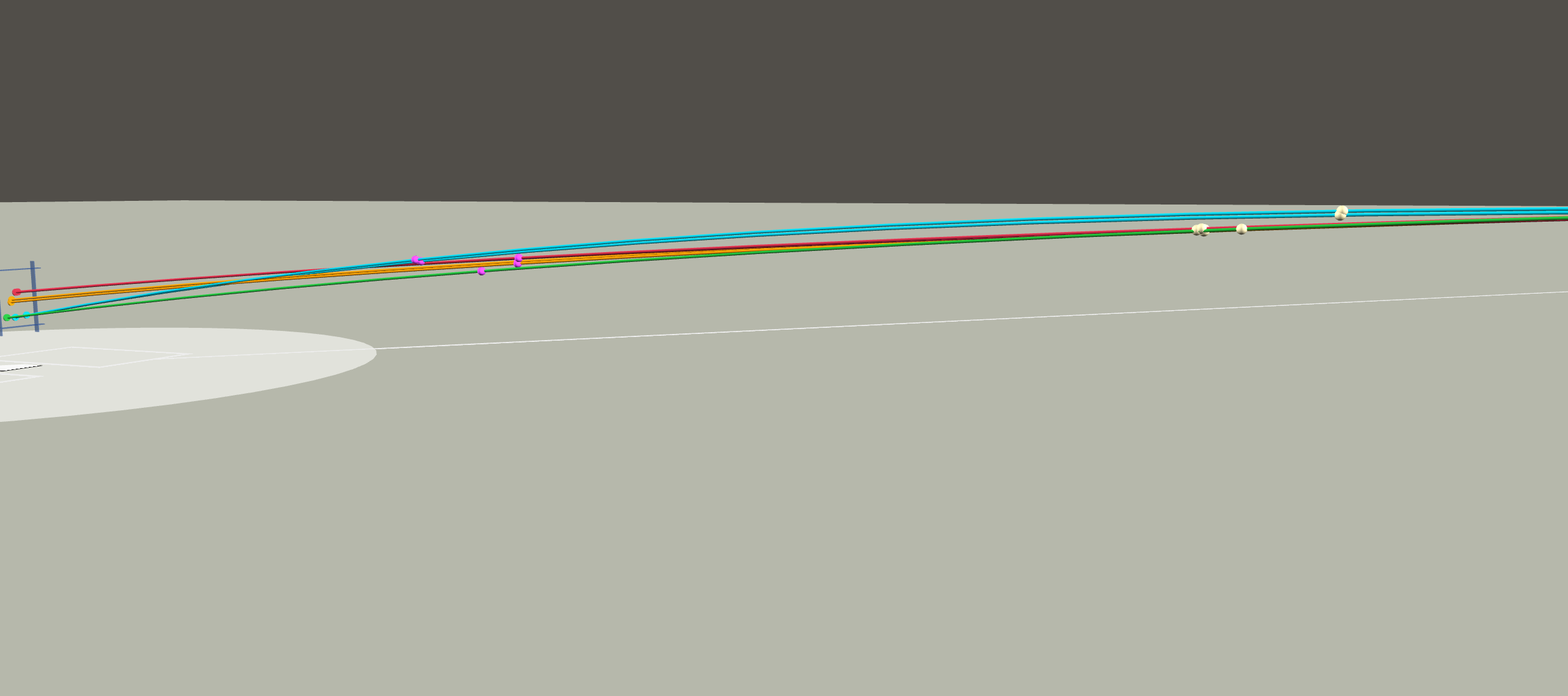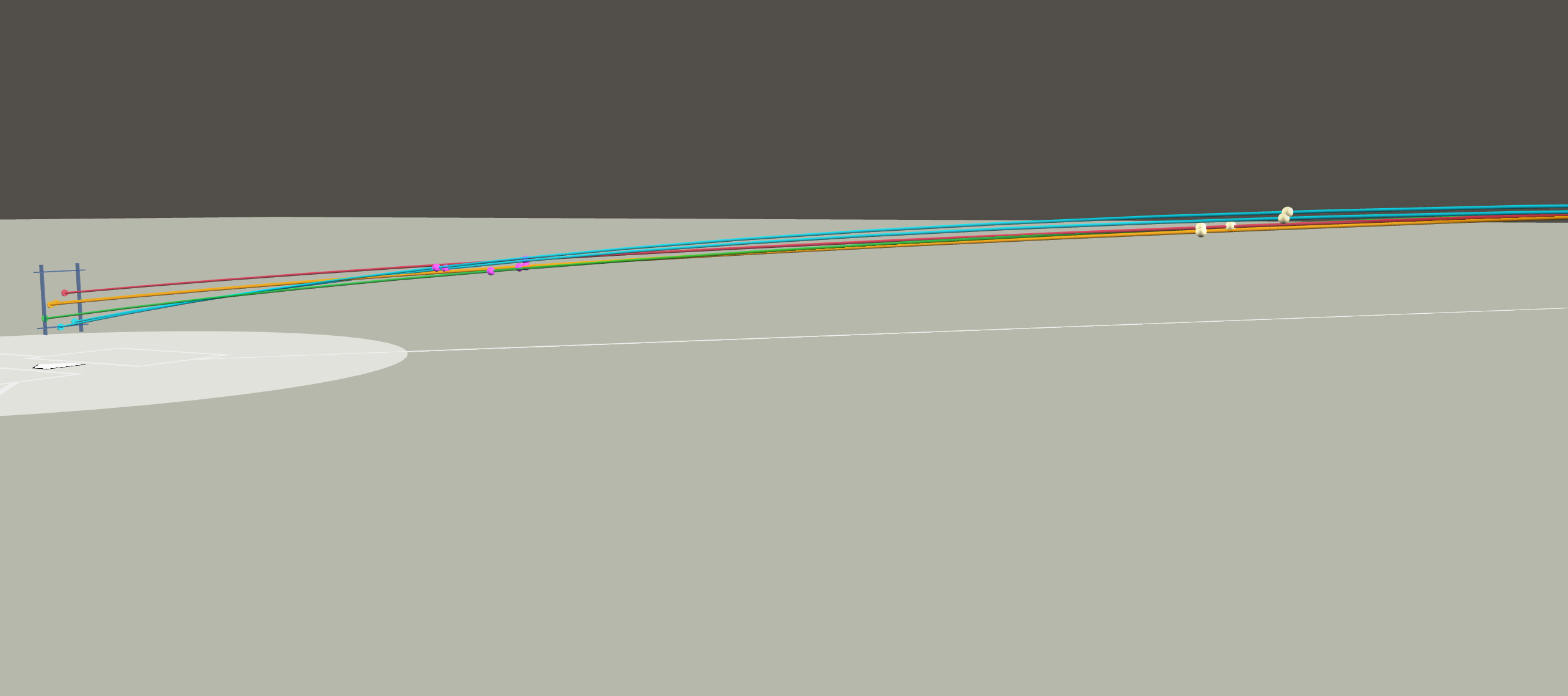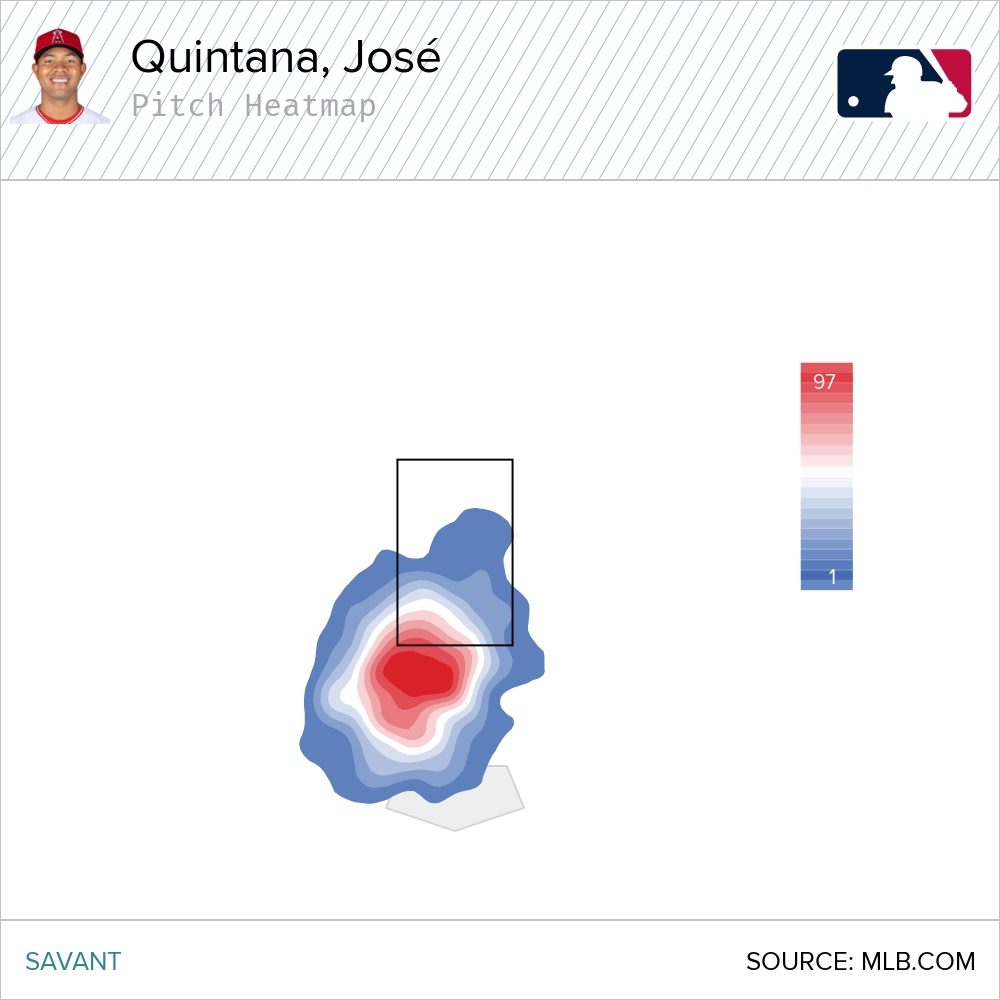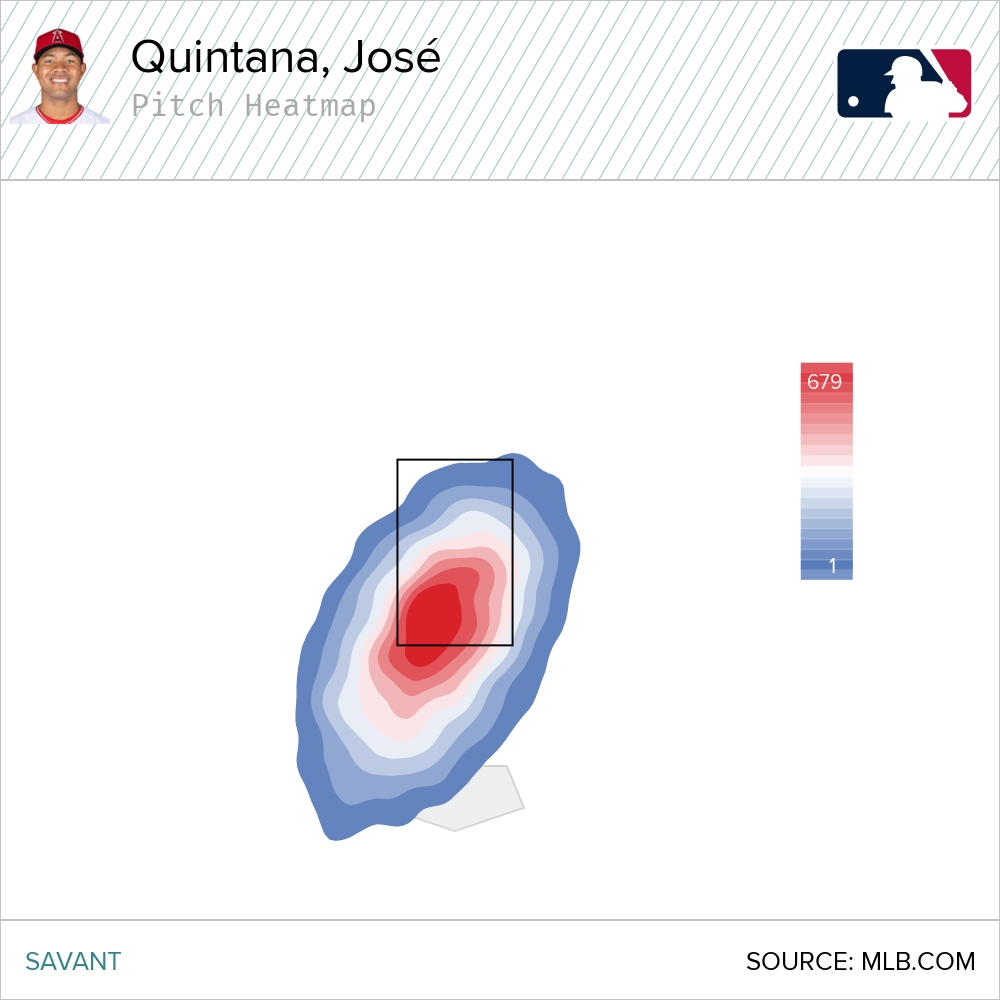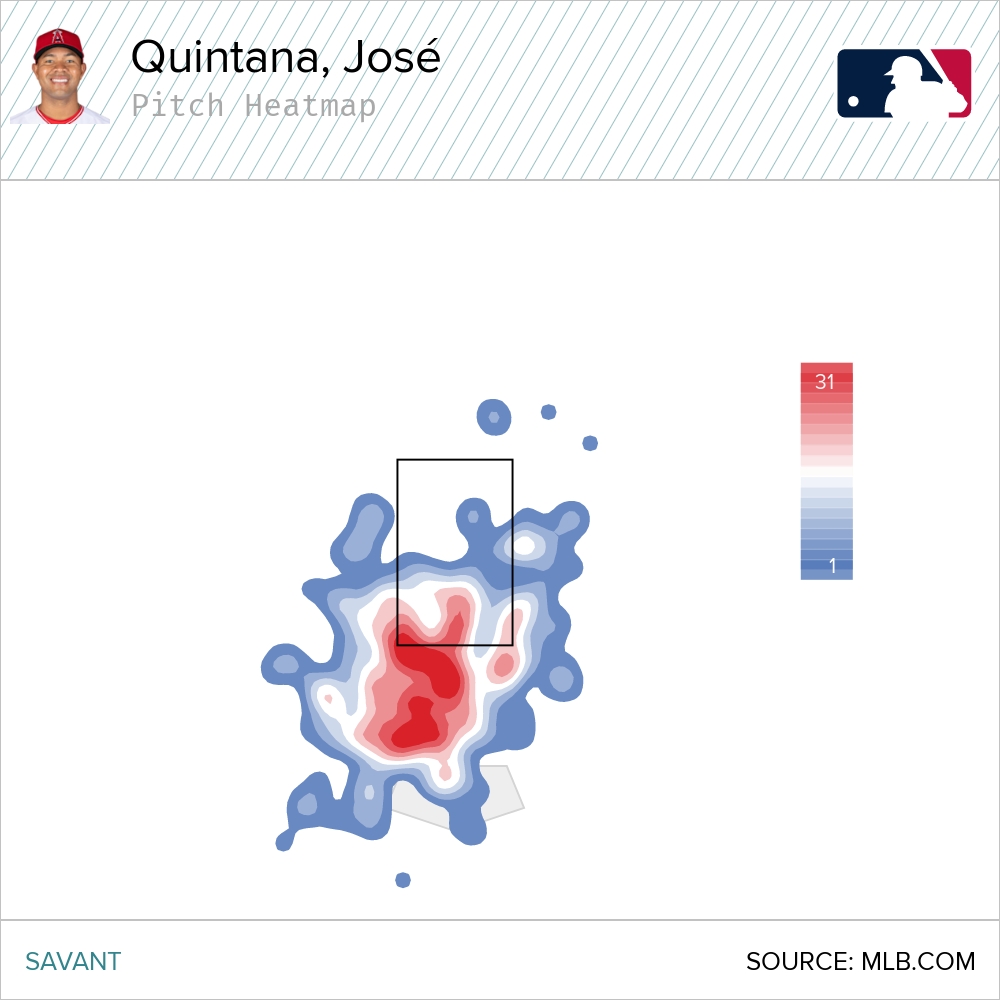José Quintana is pitching in his tenth season in the Majors this season, each one not much different than the last. From his rookie season till the end of 2019, the southpaw was as reliable as they come, starting 30 games with a mid-3’s ERA, striking out roughly 20% of batters and walking 6% of them. While the subsequent seasons with the Cubs were not quite the same as those with the White Sox, it was still dependable enough where Quintana would seemingly be someone the North Siders would like to have back once he became a free agent at the end of last season. That was not the case, as Quintana found himself signing a one-year deal with the Los Angeles Angels.
As yet another one-year flier by the Angels in recent years, Quintana has struggled in the early going just as those before him did, currently sitting with a 9.00 ERA through six starts (21 IP). It’s not the only way in which the normally dependable left-hander has changed, as he’s now walking 17.4% of those he faced… and striking out 31.2% of them. The process of achieving those numbers has been wild in itself, revealing some positives while also raising some concerns.
The Offspeed Stuff
While beefing up his strikeout rate, Quintana has subsequently increased the percentage of whiffs he’s gotten, upping it from a career rate of 9.2% SwStr to 14.6% SwStr in the early going. Most of that comes from making changes to his offspeed pitches — the curveball and changeup.
The curveball has made significant strides this season, getting hitters to swing and miss on a whopping 19.4% of offerings, far ahead of the league average of 12.5% on the pitch.
| Seasons | Usage% | SwStr% | Extension (ft) |
|---|---|---|---|
| 2012-19 | 24.6 | 12.5 | 5.8 |
| 2020-21 | 30.4 | 18.4 | 6.5 |
Take note of the extension. Prior to 2020, the average extension Quintana had on the curveball was 5.8 ft. Since, it’s been 6.5 ft, which is where his other pitches — four-seam, sinker, and changeup — are thrown from.
Now, you’re probably wondering why that difference in extension means anything. With the help of the 3-D Pitch Visualizer from Baseball Savant, let’s look at the 32-year-old’s arsenal from 2019 and 2021.
Before we get into what those images mean, we’ll just recap what the dots you see mean. You will see the three different groupings of points in each of the lines (pitch trajectories). The furthest to the right are the release points, which are fairly self-explanatory. The middle grouping (yellow) shows one the recognition point (100 ms after release). The last grouping (purple) shown represents the commit point (167 ms before the plate).
Since we are all caught up, the significance can be derived simply. In 2019, where the curveball (the top two yellow dots/blue lines) extension at release is far before the rest of his pitches, you see a greater gap between the curveball and his other pitches than you do in the subsequent image (now), meaning that a hitter has just that extra fraction of a second to determine whether the pitch is a curveball or not. Considering the pitch hasn’t changed much in movement over the years, the fact that it takes more effort to distinguish between Quintana’s curveball and his other pitches could certainly be a factor in him gaining more whiffs the past two years than he ever has before.
Another thing worth noting is the location of the curveball. For Quintana’s career, he’s generated a majority of his swings and misses on the pitch below the zone, favoring the glove side.
As a whole, the Colombian native used his curveball low in the zone and out of it, to catch called strikes while also getting his swings and misses.
But what if you could just focus on the whiffs, maximizing a pitch with an underwhelming movement profile?
Prior to 2020, Quintana had a zone rate of 42% on the curveball — a solid figure. In the past two years, that figure has plummeted to 22.4%. With fewer balls in the zone, he won’t be getting a whole lot of called strikes but combined with keeping consistent with his extension, it’s easy to see why his curveball has become a legitimate weapon in his arsenal.
The changeup has sparingly been used through his career, in large part because Quintana’s never had a feel for it. At the advice of Cubs pitching coach Tommy Hottovy in Spring Training ‘1.0’ last season, the southpaw switched to a four-seam grip on the changeup in an attempt to make the pitch a more reliable option in his repertoire. While in 2020 he didn’t quite follow up on that promise, using the pitch around 9% of the time, Quintana has thrown the pitch a career-high 15.3% this season.
And similar to how the curveball’s been used, Quintana has located only 19.2% of changeups inside the zone this season, much lower than previous figures that were bound between 30 and 40 percent. Even though that zone rate makes sure it’s not a money pitch, Quintana’s second offspeed pitch has generated swings on over 40% of pitches outside the zone while getting swings and misses 23.3% of total offerings (16.5% is league average).
Trying To Put It Together
While improving his stuff to generate more swings and misses is undoubtedly impressive, we still need to address his abysmal 17.4% walk rate.
Over the offseason, Quintana decided to place himself on the third-base side of the rubber when pitching, despite spending most of his career on the first-base side. The reason behind this comes from trying to improve the look of his arsenal, but after two disastrous outings to start the year and 10 days off before his third, Quintana then shifted back over to his original starting place to throw more strikes.
| Date | IP | ERA | K% | BB% | O-Swing% | Zone% | CSW% |
|---|---|---|---|---|---|---|---|
| First 2 starts | 5.0 | 16.20 | 26.5 | 20.6 | 27.0 | 32.0 | 31.3 |
| Last 4 starts | 16.0 | 6.75 | 33.3 | 16.0 | 28.5 | 39.6 | 28.4 |
There are some mixed results here. On one hand, there are more strikeouts, fewer walks, and considerably more pitches thrown in the zone after the change, but the ERA and walks are still bad, while the CSW has dipped slightly. We’re talking small samples here, but considering Quintana had been pitching from the first-base side of the rubber for almost his entire career, of which there have never been walk issues, the problem is much larger than simply where he’s standing.
Like most pitchers giving up too many free passes, Quintana is throwing considerably fewer pitches in two-strike counts (27.6%, compared to 30.4% from 2012-19) and many more in three-ball counts (14.4%, compared to 8.1% from 2012-19). Furthermore, his first-pitch strike percentage has dropped to a career-low of 54.1%. That in part comes from how he’s pitched to open counts.
| Seasons | FF% | CU% | SI% | CH% | SL% |
|---|---|---|---|---|---|
| 2012-19 | 52.9 | 25.2 | 11.5 | 8.0 | 2.2 |
| 2020-21 | 31.1 | 38.4 | 23.2 | 7.3 | — |
As you can see, the curveball usage has jumped 10% while the four-seam has been deployed nearly half the time than before. Furthermore, the fastball usage — combining the four-seam and sinker — is down roughly 10%.
This is where we get back into how he’s using his curveball, which is predominantly out of the zone. On the first pitch of at-bats, it’s no different, as he’s only throwing one-third of those curves in the zone. With his full repertoire, Quintana is throwing 43.1% of his pitches in the zone in fresh counts — microscopic compared to the 59.2% he had from 2012-19. By throwing fewer pitches in the zone in those situations, and really as a whole, it’s easy to conclude why Quintana’s had a problem with walks in 2021.
Conclusion
Quintana has made legitimate improvements to his curveball and changeup which has allowed him to become a good strikeout pitcher so far this season. But by throwing them nearly exclusively outside of the zone, he’s either relying on swings outside of the zone — which he isn’t really getting on the curveball — or on his fastballs carrying him to get into two-strike counts.
When the Angels signed Quintana, manager Joe Maddon mentioned that they tried to plug an area in which the 32-year-old struggled, but didn’t go into much detail. Luckily Quintana did, mentioning that he’s been hit hard by fastballs up against right-handed hitters, while also generally missing his spots at the top of the zone with the pitch. Contrary to what was said by Quintana at the time, the left-hander has thrown a career-high 23.3% of four-seamers in the top shadow region so far this season, and it hasn’t yielded very hard contact. But the platoon splits are worth mentioning, as Quintana has really struggled against right-handed batters (.924 OPS) compared to lefties (.620 OPS). While risking the potential for more walks given how he locates with the pitch, a simple fix would be to throw more changeups (.327 xwOBA v RHB, 2021) against opposite hand batters.
As an approach, Quintana’s usage of his offspeed pitches will likely continue to yield walks at an above-average clip given its minuscule zone rate. But if he starts throwing a good number more over the plate, the number of free passes should dwindle. Though, as we have covered through this piece, this could mean fewer swings and misses. It’s a fine line and Quintana will need to optimize his new skillset to give much-needed support in the Angels’ rotation.
Photo by John Cordes/Icon Sportswire | Adapted by Aaron Polcare


